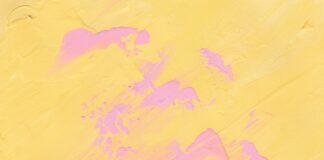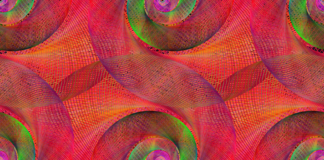Paperlike is a revolutionary accessory designed to enhance the experience of using digital tablets, particularly for those who rely heavily on stylus input. By simulating the feel of writing or drawing on paper, Paperlike addresses a common challenge faced by many digital artists, note-takers, and professionals: the lack of tactile feedback on glass screens. This innovative product has garnered significant attention for its ability to bridge the gap between traditional paper and digital devices, offering a more natural and satisfying user experience. Paperlike’s unique texture and surface properties make it a popular choice among users who seek to improve their digital interaction with stylus-based applications.
The essence of Paperlike lies in its specialized screen protector, which features a micro-textured surface that mimics the texture of paper. This design allows users to experience a more authentic writing or drawing sensation, closely replicating the feel of traditional paper. By adding a layer of friction to the screen, Paperlike not only enhances precision but also reduces the glare and fingerprints typically associated with glass surfaces. The inclusion of Paperlike in a user’s digital setup can significantly impact their overall productivity and comfort, making it an essential accessory for those who prioritize tactile feedback in their creative and professional workflows.
The Paperlike screen protector is engineered with high-quality materials to ensure durability and performance. It is designed to fit seamlessly on various tablet models, providing a snug and secure fit that does not interfere with the device’s functionality. The application process is straightforward, with Paperlike coming with an easy-to-follow installation kit that includes a cleaning cloth, application tool, and detailed instructions. This user-friendly approach ensures that the protector can be applied without bubbles or misalignment, allowing users to quickly enjoy the benefits of a more paper-like experience.
One of the key advantages of Paperlike is its ability to enhance the precision and control of stylus input. The micro-textured surface creates a slight resistance that helps users achieve greater accuracy when writing or drawing. This is particularly beneficial for tasks that require fine details, such as sketching, note-taking, or annotating documents. The tactile feedback provided by Paperlike can also reduce the strain on the user’s hand and wrist, making extended use more comfortable and reducing the likelihood of repetitive strain injuries.
Paperlike also contributes to a more immersive and enjoyable digital experience by improving the overall visual clarity of the screen. The anti-glare properties of the protector reduce reflections and improve visibility, allowing users to work comfortably in various lighting conditions. Additionally, the Paperlike screen protector helps to minimize fingerprints and smudges, maintaining a cleaner and clearer display. This enhanced visibility is crucial for tasks that require accurate color representation and detailed work, such as digital painting and graphic design.
In terms of durability, Paperlike is designed to withstand the wear and tear of regular use. The protector’s surface is resistant to scratches and abrasions, ensuring that it maintains its texture and performance over time. This durability is essential for users who rely on their tablets for daily tasks and creative projects, as it ensures that the protector continues to deliver a consistent and reliable experience.
The benefits of Paperlike extend beyond individual users to include educational and professional settings. In educational environments, Paperlike can enhance the digital learning experience by providing students with a more familiar and engaging interface for taking notes and completing assignments. The tactile feedback of Paperlike can make digital note-taking feel more like traditional writing, helping students stay focused and retain information more effectively. Similarly, in professional settings, Paperlike can improve productivity by providing a more efficient and comfortable platform for annotating documents, creating presentations, and collaborating on projects.
For artists and designers, Paperlike offers a range of advantages that can elevate their creative process. The improved precision and control provided by the protector can enhance the quality of digital artwork and make it easier to achieve desired results. The texture of Paperlike also allows for more natural brushstrokes and pen strokes, closely resembling traditional drawing and painting techniques. This can be particularly valuable for artists who transition from physical to digital mediums, as it helps maintain their familiar workflow and techniques.
In addition to its practical benefits, Paperlike also has a significant impact on the overall user experience. The feeling of writing or drawing on a textured surface can make digital interactions more enjoyable and satisfying, leading to increased engagement and creativity. Users who appreciate the tactile feedback of traditional paper can find Paperlike to be a valuable tool in bridging the gap between the physical and digital worlds.
The development and evolution of Paperlike reflect ongoing advancements in technology and user preferences. The creators of Paperlike continuously seek to improve the product based on user feedback and technological innovations. This commitment to refinement ensures that Paperlike remains at the forefront of screen protector technology, offering users the latest advancements in digital interaction and performance.
The integration of Paperlike into various workflows and activities underscores its versatility and adaptability. For professionals who frequently use tablets for drawing, sketching, or digital note-taking, Paperlike becomes an indispensable tool for enhancing productivity and achieving high-quality results. The ability to replicate the feeling of paper on a digital screen allows users to maintain a natural and intuitive approach to their work, even in a fully digital environment. This integration of Paperlike into professional settings not only streamlines tasks but also supports creative processes by providing a familiar and responsive surface.
For students and educators, Paperlike offers significant advantages in the educational sphere. In classrooms, Paperlike can transform the way students interact with digital devices, making note-taking and textbook annotation more engaging and effective. The tactile feedback provided by Paperlike can help students retain information better by mimicking the traditional paper-and-pen experience, thus enhancing their learning outcomes. Educators can also benefit from using Paperlike for grading, providing feedback, and preparing teaching materials, as it allows for more precise and comfortable interactions with digital content.
The impact of Paperlike extends to various creative fields, including graphic design, digital painting, and animation. Designers and artists often seek tools that offer precise control and a natural feel, and Paperlike meets these needs by providing a textured surface that closely resembles traditional media. The enhanced grip and reduced friction contribute to smoother strokes and more accurate detailing, which can significantly improve the quality of digital artwork. This is particularly useful for professionals who rely on digital tablets for creating intricate designs, illustrations, or animations, as it helps them achieve their artistic vision with greater ease.
Moreover, the development of Paperlike reflects a broader trend toward improving user experience in digital devices. As technology advances, there is a growing demand for accessories that enhance the functionality and usability of devices like tablets. Paperlike addresses this demand by offering a solution that combines the familiarity of traditional paper with the convenience of digital technology. This approach not only appeals to users who value tactile feedback but also aligns with the ongoing pursuit of creating more intuitive and responsive digital tools.
The process of applying Paperlike is designed to be user-friendly and efficient. The screen protector is meticulously crafted to ensure a precise fit for a wide range of tablet models, and the application process is straightforward. Users can follow the included instructions to apply the protector without leaving bubbles or wrinkles, ensuring a smooth and seamless finish. The inclusion of a cleaning cloth and application tool further simplifies the process, making it accessible even for those who may not be familiar with applying screen protectors.
The durability and long-term performance of Paperlike are key considerations for users who rely on their tablets for daily tasks. The protector is designed to withstand regular use, resisting scratches and maintaining its texture over time. This durability ensures that Paperlike continues to deliver a consistent and high-quality experience throughout its lifespan. Users can expect the protector to retain its functionality and appearance, providing reliable performance even with frequent use.
In addition to its functional benefits, Paperlike contributes to the overall aesthetics of digital devices. The sleek and unobtrusive design of the protector complements the look of modern tablets, preserving their visual appeal while enhancing their functionality. The subtle texture of Paperlike adds a sophisticated touch to the device, creating a refined and professional appearance that aligns with the user’s style and preferences.
Overall, Paperlike represents a significant innovation in the realm of digital accessories. By combining advanced materials, thoughtful design, and a focus on user experience, Paperlike enhances the way users interact with their tablets and styluses. Whether for professional use, educational purposes, or creative endeavors, Paperlike provides a valuable enhancement that improves precision, comfort, and overall satisfaction. As digital technology continues to evolve, Paperlike stands as a testament to the importance of integrating tactile feedback and user-centered design into the digital experience.














